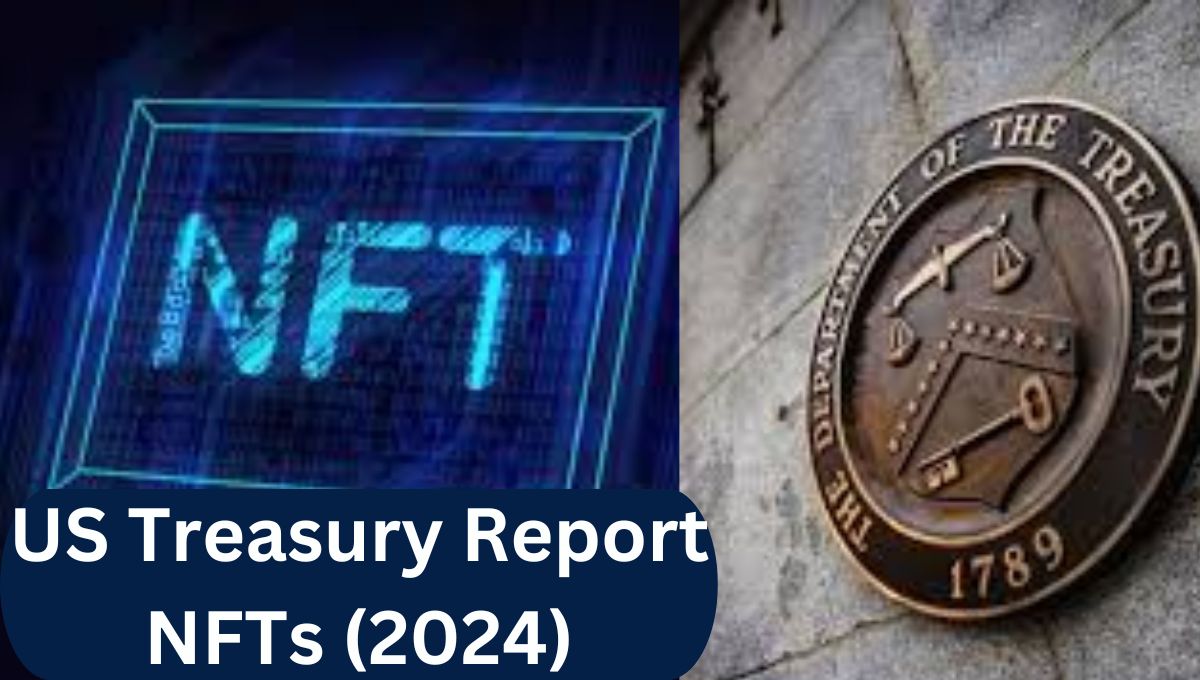Summary: The US Treasury looked into how non-fungible tokens (NFTs) and NFT platforms might be used for illegal activities like money laundering, funding terrorism, and other crimes. This study was prompted by the Treasury’s 2022 plan to address risks in digital assets. It shows the challenges of creating rules to stop illegal activities with NFTs.
Key Findings:
- Traditional Methods Predominate: Most illegal activities like money laundering and funding terrorism happen with regular money and traditional methods, not with digital assets like NFTs.
A Call for Collaboration
The Treasury’s report says it’s important for different groups to work together to make NFTs safer without stopping innovation:
- Industry Stakeholders: NFT marketplaces and businesses should have stricter rules to know their customers (KYC) and stop illegal activities (AML).
- NFT Developers: Developers should build safety features into NFTs, like tracking who owns them and spotting suspicious transactions.
- Government Agencies: Agencies need to create rules for NFTs that balance innovation and protection for consumers.
Addressing NFT Fraud and Money Laundering
NFTs can be used for fraud and money laundering in several ways:
- Wash Trading: This is when someone buys and sells an NFT to themselves to make it seem more valuable.
- Pump-and-Dump Schemes: Scammers use social media to hype up an NFT, and then sell it at a high price, leaving other buyers with worthless NFTs.
- NFT Laundering: Criminals use stolen money to buy NFTs and then sell them on legitimate platforms to “clean” the money.
Recommendations:
To stop the misuse of NFTs, the Treasury suggests:
- Regulating the NFT Market: Making rules to increase transparency and accountability.
- Collaborating with Industry Experts: Working together to prevent fraud and illegal activities.
- International Cooperation: Partnering with other countries to fight illegal activities.
- Consumer Education: Teaching people about the risks of NFTs and digital assets.
The Treasury Department says it’s important to have strong procedures in place to know who is buying and selling NFTs and to prevent money laundering. They also say that making the NFT market more transparent could help. This might mean requiring NFT platforms to share more information about who owns each NFT and its transaction history.
The United States Treasury Department has released its first-ever risk assessment report on nonfungible tokens (NFTs). This report is designed to give regulators a better understanding of the potential risks and security issues associated with the fast-growing NFT market.
The report highlighted several risks, such as the potential for terrorists to use NFTs to fund their activities, the possibility of state actors financing nuclear proliferation through NFTs, and the threat of money laundering. Additionally, investors face dangers like theft, rug pulls, and other types of fraud that have become increasingly common.
The report highlighted that most of these illegal activities happen through traditional money and transactions, not just in the digital asset space.
The risk assessment acknowledges that most money laundering, terrorist financing, and proliferation financing happen through traditional methods and fiat currency transactions, rather than within the digital asset ecosystem. The Treasury also pointed out that even when there is investor or market abuse in the digital asset space, it usually occurs through well-known schemes like Ponzi schemes or insider trading, rather than through unique digital asset mechanisms.
However, fraud has happened through specific digital asset mechanisms, such as manipulating smart contracts.
NFT Creation Process
| Role | Description |
| Role Activities Creator | Designs appearance or content of NFT, typically in a digital format such as a JPEG, PNG, or GIF |
| Minter | Deploys/executes code such that NFT data is placed on the blockchain, usually done by uploading the NFT file to a digital asset wallet, connecting the wallet to an NFT platform, and choosing on which blockchain the NFT will be placed |
| Issuer | Conducts primary offer and sale of NFT, once uploaded to a blockchain, and can include an NFT platform |
| Redeemer | Enables redemption of an NFT that purports to be redeemable for a referenced asset |
Despite the concerns about the potential for NFTs to be misused for illegal activities, the Treasury acknowledged that there are very few, if any, instances of NFTs being used for terrorist financing, nuclear proliferation, or drug trafficking.
One significant example of malicious activity noted in the report was the theft of digital assets by North Korea and associated hacker groups. These groups aim to evade U.S. sanctions and generate revenue for military spending.
The Treasury explained that NFTs comprise only a small part of the overall digital asset theft, as DPRK hackers have also targeted other financial institutions.
The report ended with several recommendations to prevent the misuse of NFTs. These include regulating the NFT market, working with industry experts to avoid fraud, collaborating with international partners to combat illegal geopolitical activities, and educating consumers about the risks of NFTs and digital assets.
Conclusion: US Treasury Report Outlines Potential Financial Risks of NFTs (2024)
NFTs present investors, collectors, and creators with fascinating opportunities, but there are risks associated with them that should be considered. The US Treasury report emphasizes the significance of regulatory supervision and investor protection measures while acting as a timely reminder of the possible financial risks connected to NFTs. The integrity and stability of the NFT market are dependent on stakeholders cooperating as it develops.
Frequently Asked Questions for US Treasury Report Outlines Potential Financial Risks of NFTs (2024)
Are NFTs regulated by any government authority?
NFTs are mostly unregulated, but regulators are looking for ways to protect investors.
How can investors mitigate the risks associated with NFT investments?
Investors can reduce risks by researching, verifying the legitimacy of NFTs, and using reputable marketplaces. Diversifying their NFT portfolio can also help.
What steps are regulators taking to address the risks of NFTs?
Regulators are considering KYC and AML rules, better investor disclosures, and guidelines for market participants.
Can NFT platforms improve security to protect investors?
Yes, platforms can enhance security with strong cybersecurity measures, regular audits, and multi-factor authentication.
How do NFTs contribute to the broader digital economy?
NFTs allow creators to monetize digital content, offer new ownership and investment opportunities, and drive innovation in digital asset management.




